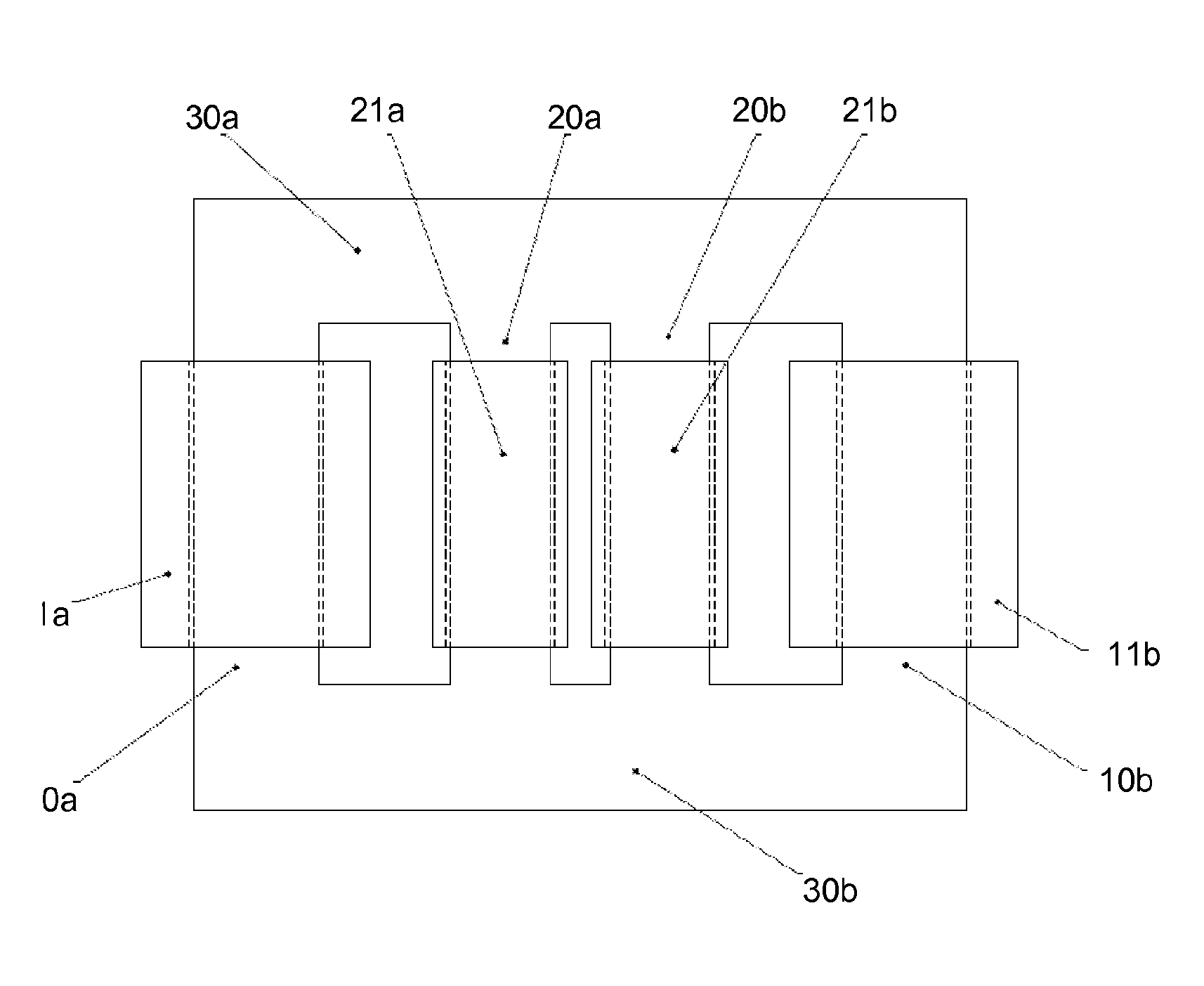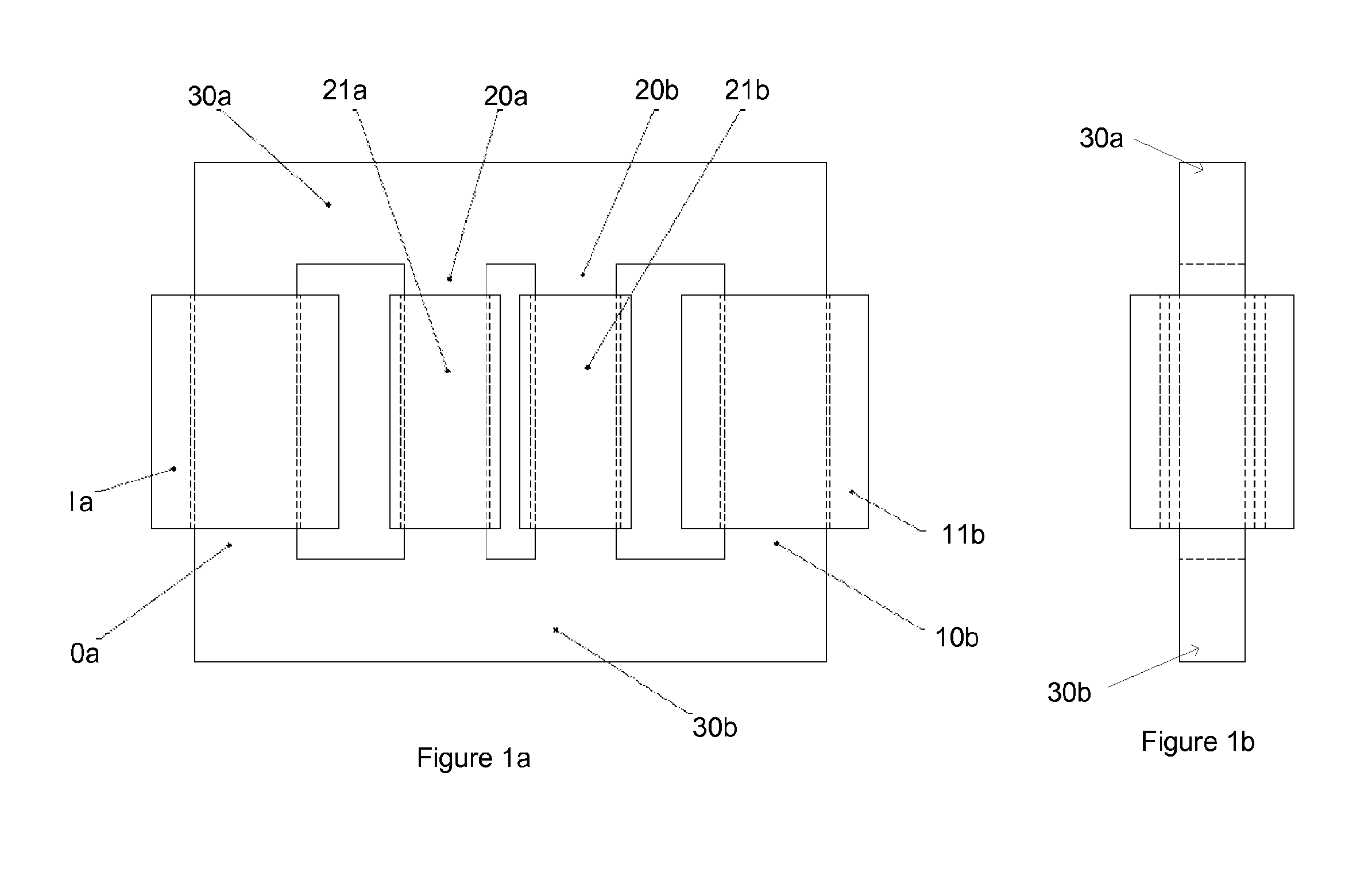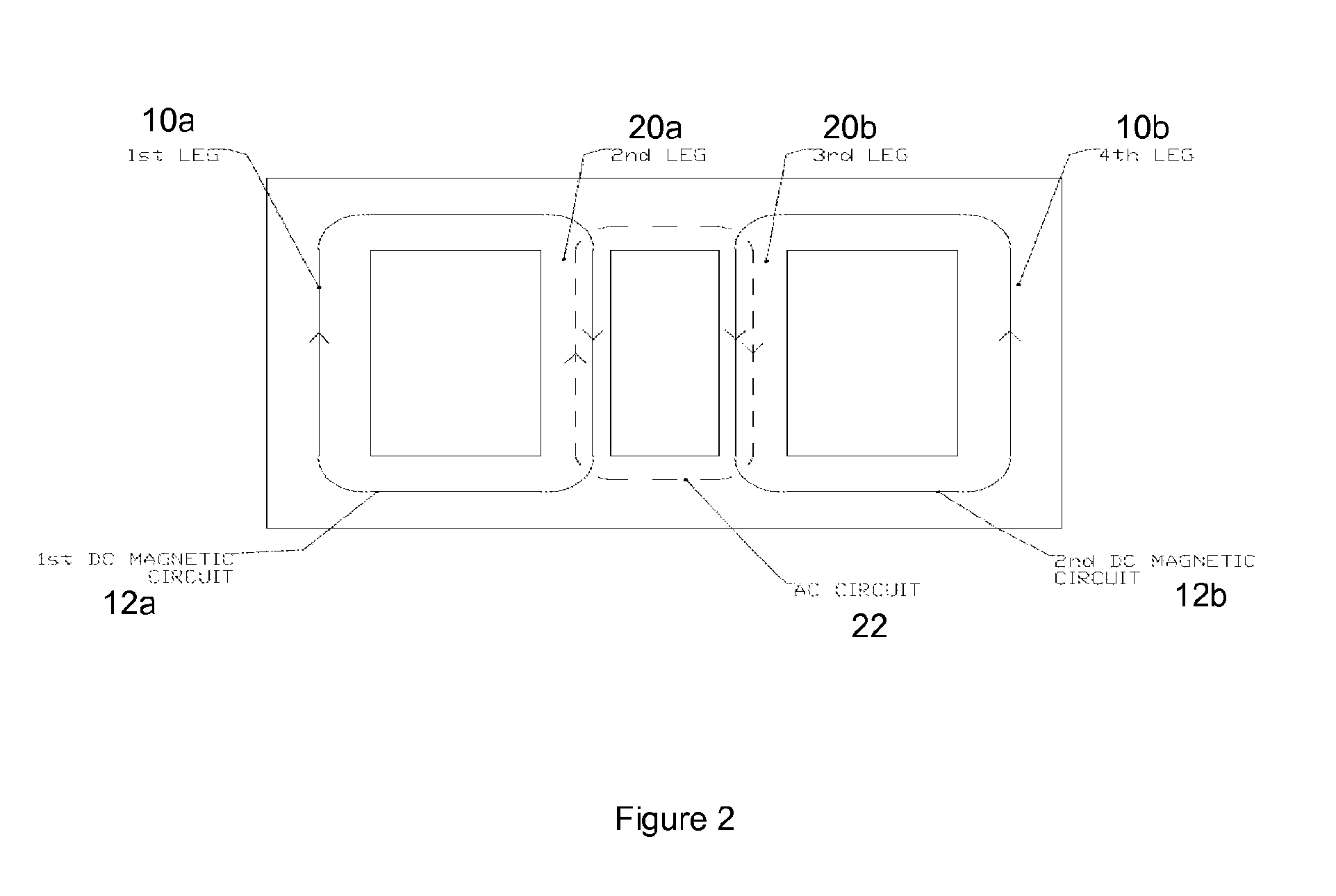Fault current limiter
a current limiter and fault technology, applied in the field of fault current limiters, can solve the problems of high dynamical and thermal stress on equipment, inability to avoid faults in electrical power systems, and conventional circuit breaker technology does not provide a full solution to selective interrupting currents. performance improvement
- Summary
- Abstract
- Description
- Claims
- Application Information
AI Technical Summary
Benefits of technology
Problems solved by technology
Method used
Image
Examples
first embodiment
[0048]FIGS. 1a and 1b show the invention. In this embodiment, the FCL 1 has a single core, and the FCL 1 is arranged to limit fault currents for a single phase AC supply. FIG. 1a shows a side view, whereas FIG. 1b shows an end view.
[0049]As shown in FIG. 1a, the FCL 1 has a single core that includes four legs 10a, 20a, 20b and 10b aligned in the same direction. The four legs are joined by a first yoke 30a at one end, and by a second yoke 30b at the other end. In this embodiment, the four legs 10a, 20a, 20b and 10b are aligned vertically, with the two yokes 30a, 30b aligned horizontally.
[0050]A first DC coil 11a is wound around the first leg 10a, and a second DC coil 11b is wound around the fourth leg 10b. Hence, a DC coil is wound around each of the two outer legs 10a and 10b.
[0051]A first AC coil 21a is wound around the second leg 20a, and a second AC coil 21b is wound around the third leg 20b. The AC coils 21a and 21b are connected in series, and are connected to the grid. Hence,...
second embodiment
[0125]The FCL 100 of the second embodiment can further comprise a tank (not shown) arranged to house the core. The tank can be partially or completely filled with a dielectric fluid. Any suitable dielectric fluid could be used, for example mineral oil.
[0126]In the FCL 100 of the second embodiment, the first 121Ra, third 121Sa and fifth 121Ta AC coils are arranged from top to bottom in order on the second leg 120a, and the sixth 121Tb, fourth 121Sb and second 121Rb AC coils are arranged top to bottom in order on the third 120b leg. However, in other embodiments, the R, S, T coils on each leg may be arranged in a different pattern. For example, in some embodiments, the first 121Ra, third 121Sa and fifth 121Ta AC coils may be arranged in order on the second leg 120a, and the sixth 121Tb, fourth 121Sb and second 121Rb AC coils may be arranged in the same order on the third 120b leg.
[0127]In some embodiments that use three AC coils (one of each phase) on a single core, the AC coils for e...
PUM
| Property | Measurement | Unit |
|---|---|---|
| voltages | aaaaa | aaaaa |
| time | aaaaa | aaaaa |
| DC current | aaaaa | aaaaa |
Abstract
Description
Claims
Application Information
 Login to View More
Login to View More - R&D
- Intellectual Property
- Life Sciences
- Materials
- Tech Scout
- Unparalleled Data Quality
- Higher Quality Content
- 60% Fewer Hallucinations
Browse by: Latest US Patents, China's latest patents, Technical Efficacy Thesaurus, Application Domain, Technology Topic, Popular Technical Reports.
© 2025 PatSnap. All rights reserved.Legal|Privacy policy|Modern Slavery Act Transparency Statement|Sitemap|About US| Contact US: help@patsnap.com



